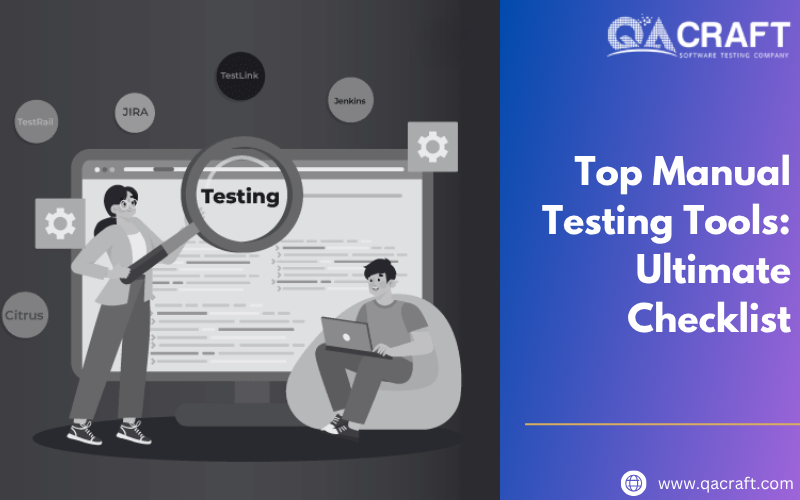01 Jul

Introduction to Manual Testing:
Manual testing is a process where testers manually execute test cases without using any automation tools. It focuses on finding bugs, errors, and defects in the software by simulating end-user behavior. Testers follow pre-defined test cases, observe the software’s behavior, and compare it with the expected results. This type of testing is crucial during the initial stages of software development because it helps identify critical bugs early on. And for this we use number of Manual testing tools and here are some top Manual testing tools.
While manual testing doesn’t rely on automation tools for execution, certain tools are used to aid the process by helping with test case management, bug tracking, and reporting.
➭ Test Case Management Tools:

TestRail: – TestRail is a popular test management tool that helps testers organize test cases, plan test runs, and track execution progress. It allows real-time collaboration between team members and provides detailed reporting on test results.

Zephyr: – Zephyr integrates seamlessly with JIRA, making it easier for teams to manage test cases and link them directly to user stories or bugs. It supports various types of testing, including manual testing, and provides detailed dashboards for tracking quality metrics.
➭Bug Tracking Tools:

JIRA: – JIRA is one of the most widely used tools for bug and issue tracking. Testers log defects in JIRA with detailed information such as bug description, severity, priority, screenshots, and steps to reproduce. Developers can then work on these issues, updating the status in real-time.

Bugzilla: – Bugzilla is another defect tracking tool that is simple yet powerful. It helps testers submit bugs, assign them to developers, set priorities, and track their status until closure.
➭ API Testing Tools (Sometimes Used in Manual Testing):

Postman: – While primarily used for API testing, Postman is useful for manual testers when they need to test APIs without writing automation scripts. Testers can send requests, check responses, and validate the data flow between client and server.

Swagger: – Swagger helps testers manually explore APIs, understand their endpoints, and test different scenarios without writing code.
Why Use Manual Testing Tools?
Increase efficiency: –Tools like JIRA and TestRail streamline the tracking of test cases and bugs.
Improve accuracy: –Detailed bug reports with screenshots (using Snagit or Loom) reduce miscommunication between testers and developers.
Enhance collaboration: – Cloud-based tools like Google Sheets and Confluence help teams work together, especially in remote environments.
Ensure traceability: – Test management tools link test cases to requirements, ensuring full coverage and helping testers track which functionalities have been tested.
Also Read: Why Manual Testing Is Still Important?
Conclusion: –
Manual testing is vital for detecting bugs early in the development lifecycle, ensuring a smooth user experience, and validating software functionality. Although it doesn’t involve automation scripts, testers rely on various tools like JIRA, TestRail, Snagit, and Postman to manage their work efficiently. These tools support test case management, bug tracking, collaboration, and reporting, all of which contribute to delivering high-quality software.




Nikhil Trivedi